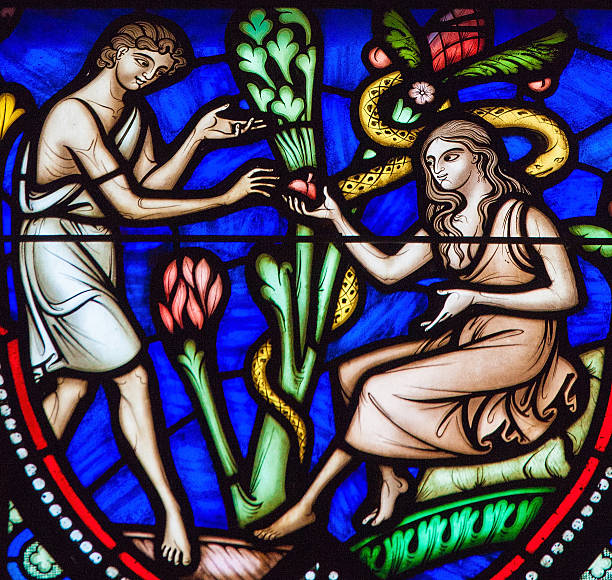Unlocking Theology Through Timeless Treasures: Exploring the Hidden Gems of Old-Time Hymns
- Nicole DeWeese-Quiroz

- Apr 11
- 6 min read
Updated: Apr 18

As the Psalmist declares, “Surround me with your tender mercies so I may live” (Psalm 119:77 NLT). Similarly, the sinner is uplifted through hymns that speak of the cleansing power of the Holy Spirit. How does the Holy Spirit purify a sinner immersed in the despair of their own sin? Upon reviewing an old Nazarene hymnal, I am struck by how frequently these hymns address atonement through the cleansing blood of Jesus Christ. By analyzing selected hymns, I will explore various methods this hymnbook uses to address sin, especially concerning humanity and the fall of Adam and Eve in Genesis. This raises another question: In what way can God's holiness be directly relevant to humanity? How can God's redeeming grace save sinners and also offer atonement through the Holy Spirit, as illustrated by examples from the old Nazarene hymnal?
Grenz (2000) states, “Behind individual acts of failure is a deeper way in which we are ‘in sin” (p. 187). The essence of sin is explored through the various aspects of traditional church hymns. One must consider how the composers of these hymns crafted such profound content in their songs. It appears that the numerous challenges and hardships of this world offer abundant material for the sinner and allow for spiritual healing.
Singing hymns enables the parishioner to let their own words touch the heart, promoting transformation. While some hymns seem to encourage transformation, others appear to bring about conviction. These hymns serve as reminders that the parishioner is a sinner saved by the grace of God. When these songs are heard or sung, they invite the presence of the Holy Spirit to abound.
Hymns often resonate deeply with parishioners, prompting them to reflect on their own human condition. In the hymn "The Cleansing Wave" https://hymnary.org/media/fetch/181817 by Mrs. J.F. Knapp, and her daughter Phoebe Palmer Knapp; the focus is on the profound woundedness of Jesus Christ. The hymn vividly portrays the most broken state of Jesus as He hangs on the cross, taking on the world's sins and offering Himself as a living sacrifice for those who accept it. Consequently, a healing wave emerges from this sacrifice, cleansing the heart and mind of transgressions.
“Where Jesus Is, Tis Heaven” https://hymnary.org/media/fetch/184903 by C.F. Butler & J.M. Black, (1926). This hymn addresses the issue of sin and the numerous sorrows it has caused the soul. Theologically, heaven might seem distant when weighed down by the sorrow of sin. However, when Christ arrives to remove the sins and burdens of the world,
it is like a shining light bringing relief from years of struggle. When Jesus lifts the burden of sin, forgiveness brings life to the transgressor and heaven to earth.
"Sweeter as the Years Go By" https://hymnary.org/media/fetch/182251 by Mrs. C.H. Morris, (1940) depicts Jesus as a healer who not only gave sight to the blind but, through His immense love and willingness to suffer for the lost, graciously brought sinners back to His embrace. How did Jesus heal? He mended the broken-hearted gathered around Him through His saving grace at the cross. He not only restored sight to the blind but, with a compassionate heart, continued to desire even the most wayward sinners.
“Power in the Blood of Jesus” by Hugh C. Benner, (1951) emphasizes the immense power contained in the blood of Jesus, capable of making even the vilest of sinners completely whole. This power can purify any stain from the heart, help sinners remain faithful daily, and eliminate the guilt, condemnation, and weariness that sin brings to a troubled soul. Through His abundance, He can govern and reign over all.
“His Grace Aboundeth More” https://hymnary.org/media/fetch/186077 by William J. Kirkpatrick & Kate Ulmer, (1899) begins by describing the experience of feeling wounded, broken, and worthless, as well as having violated all of God’s laws. Through God's grace and the shed blood of Jesus Christ, past sins lose their significance. His grace is abundant, extending through His precious blood. As it flows freely to all sinners, it cleanses and washes away all sins.
“Glory to His Name” https://www.youtube.com/watch?v=j1YDLas2Eyc by E.A. Hoffman & J.H. Stockton. This hymn speaks of the magnificence of God's name. This glory began when our Savior sacrificed Himself on the cross, where the cleansing of sins commenced, flowing directly to the sinner's heart,
purified by the power of the blood at the cross. It is clear that Jesus' saving grace keeps the sinner pure. How greatly should He be glorified? All glory belongs to His name! With Jesus now dwelling sweetly within, there is a fountain of life that is rich and sweet. To be complete, one simply needs to cast their soul at the Savior's feet and plunge in today.
“Sanctifying Power” https://www.facebook.com/Keyofdmusic/videos/sanctifying-power/303731305284474/ by Mrs. L.N. Morris, (1908). Through the sanctifying power accessible to every devoted heart, His power is sufficient to cleanse all from sin. With the Holy Spirit dwelling within, Salvation is freely given. All unworthy souls can access and draw from this power; it is a power that will eternally liberate you to walk in His divine light. Cast your doubts and fears aside, for there is power that He will supply.
"Joy in My Soul," by J.B. MacKay is a hymn that describes the moment a sinner first believes in the existence of a savior. The savior's redeeming blood has erased all sins upon the altar where He was sacrificed.
As the sinner embraces the Savior, his heart is overwhelmed with joy as he starts to believe. His heart feels lighter as all his sins are cleansed. Now, the believer's soul is filled with joy.
“Holiness Unto the Lord” by Mrs. L.N. Morris, (1900) conveys that embracing the Holy Spirit https://wherelivingbegins.wordpress.com/2022/07/31/holiness-unto-the-lord-lelia-n-morris-1900/ leads to an abundance of holiness. It brings liberation from bondage and the need to escape idols. Singing this hymn can result in the release from the yoke of sin, allowing many to start experiencing the Holy Spirit's power to overcome the evils in a sinner's life. This hymn inspires parishioners to advance on the path of righteousness.
“Nothing But the Blood of Jesus” <iframe src="https://www.loc.gov/item/jukebox-761413?&embed=resources" width="697" height="298" frameborder="0" scrolling="no" allowfullscreen></iframe> by Robert Lowry, though it appears straightforward, is deeply meaningful. This hymn emphasizes that not only can one be forgiven for their sins, but it is through the atonement of the blood that the heart's deepest cries are cleansed. This atoning and redeeming flow purifies us, making us as white as snow, replacing original sin with purity.
"He Abides" by Herbert Buffum and D.M. Shanks, conveys the message of the Holy https://www.youtube.com/watch?v=txBfa4ySTtg Spirit dwelling within the believer's heart, bringing a lasting peace. With the Spirit in
control, all burdens are lifted, allowing the sinner to walk the path of righteousness.
As God initially brought life to the earth, He declared, "Let the land produce every kind of grass and seed-bearing plant. Let there be trees that grow seed-bearing fruit, and the seeds will produce plants and trees of the same kind." (Genesis 1:11 NLT) The earth was originally a thriving paradise until sin became a problem. The first sin arose when the serpent tempted Eve to eat from the forbidden tree of life. This fall left humanity in a state of complete vulnerability. This marked the beginning of corruption, which was then passed down through generations.
This is illustrated in the story of Cain and Abel, where Cain, driven by jealousy, killed his brother. (Genesis 4:1-15) These corrupted seeds demonstrated humanity's potential for evil deeds, leading to chaos, sinfulness, and self-centeredness. Such actions caused humans to feel entirely separated from God, making it very challenging to maintain any meaningful relationship with Him.
The hymn “Holiness Unto the Lord” by Mrs. L.N. Morris, (1900) discusses how https://wherelivingbegins.wordpress.com/2022/07/31/holiness-unto-the-lord-lelia-n-morris-1900/embracing the Holy Spirit enables holiness to flourish. It speaks of liberation from bondage and the breaking of sin's yoke. Many people can begin to see the Holy Spirit's power to eliminate evils in a sinner's life. This hymn is powerful, motivating parishioners to follow the path of righteousness.
The holiness of God can be directly applied to mankind through the saving grace of His ultimate sacrifice on the cross of Calvary. Although the theology of the Nazarene Hymnbook reflects scriptures as the body of Christ, it also is capable of transforming them. “For all have sinned and fallen short of the glory of God.” (Romans 3:23 NLT) In the book of Genesis, humanity's original sin is introduced through the fall of Adam and Eve. Initially, humans were created sinless and with rational minds. God's original plan was for mankind
to glorify and live in close communion with Him. Out of His boundless mercy, God sent a savior who was crucified to provide a path back to Him. Through this holy sacrifice and fellowship, humanity was given the chance to regain holiness with God. The parishioner can find relief from worldly troubles through the redeeming power of the cross. The Nazarene Hymnbook expresses this power, leading to new levels of healing, atonement, and transformation. Despite human sinfulness and the tendency to avoid responsibility, redemption is available through the grace of Jesus Christ.
References
Grenz, S. (2000). Theology for the Community of God. Grand Rapids, MI: Eerdman’s.
Holy Bible, (1966). Life Application Study Bible. New Living Translation. Tyndale
House Publishers, Inc. Wheaton, IL
Llenas, H. (1951). Praise and Worship, the Nazarene Hymnal. Nazarene Publishing
House: Kansas City, MI.
















Comments